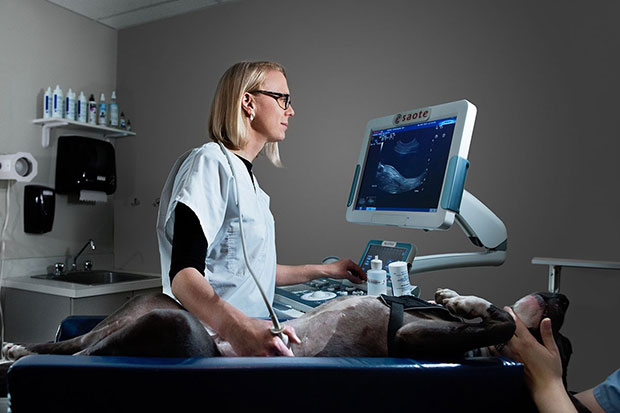The American College of Veterinary Radiology and European College of Veterinary Diagnostic Imaging have released a consensus statement for the standardization of the abdominal ultrasound examination in dogs and cats, published as an open-access article in the November/December issue of the journal Veterinary Radiology & Ultrasound.
Dr. Gabi Seiler, a professor at North Carolina State University, acted as chair of the joint committee that prepared the consensus statement. She herself plans to use the standard in the clinic setting to guide ultrasound examinations and documentation, as well as in handouts for students learning ultrasound and for attendees of continuing education courses.
“It was helpful to have a committee of many radiologists with different backgrounds and different work environments, from academia to private practice and teleultrasonography,” Dr. Seiler said in an announcement about the consensus statement. “Every comment and suggestion was discussed by the committee—even if not included because our consensus opinion differed.”

The consensus statement offers clear, illustrated guidelines on the views, video clips, and measurements that should be acquired for a complete abdominal ultrasound. The guidance includes the following:
- Illustrated images for each organ or system.
- Tables listing still images and video clips to be acquired.
- Recommendations on documentation, patient preparation, and equipment.
Ultrasound is a modality that is easily accessible to veterinarians and technologists as well as others, according to the ACVR, and these guidelines can be used as a tool to enable consistent image quality across practitioners and aid in interpretation.
The ACVR and ECVDI envision this consensus statement being used as a teaching tool in practice, academia, and continuing education. The specialty colleges wish to foster the highest quality of ultrasound imaging to benefit animal owners and patients and to maximize the information that can be interpreted from the documented images.
